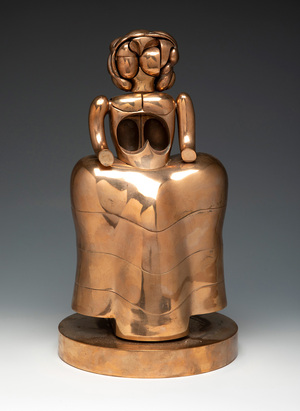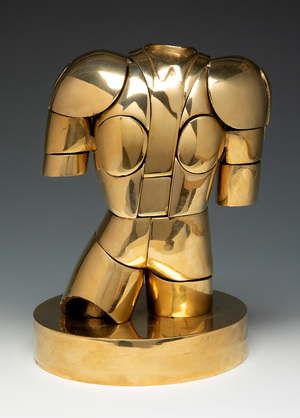The sculptural puzzles of Miguel Ortiz Berrocal
Miguel Ortiz Berrocal reached the pinnacle of his career thanks to his iconic removable sculptures
Martín Berrocal came to sculpture by chance. The wishes of his father, a doctor by profession, for him to follow in his footsteps collided head-on with Berrocal’s artistic vocation, who would finally enroll in architecture after completing two years of exact sciences. It was then, when, thanks to his mathematics classes, his interest in issues such as combinatorial topology and the dimension of space awoke, which finally led him to discover his passion for sculptural practice.
In this way, the residue of his academic training became an eternal source of inspiration that gave rise to sculptures whose beauty was based on the mathematical principles that sustain reality. In this sense, the artist entered unexplored paths, penetrating the volumes intrinsic to the forms, to show us that, under the surface of the sculpture itself, another one lies hidden that remains hidden . This process of investigating the volumes within the forms gave birth to what would become the most characteristic and personal feature of his sculptural language.: the removable and combinatorial condition of his works , whose different pieces become a puzzle that the viewer must assemble and disassemble in order to discover the interior space that is hidden in them. Therefore, Berrocal conceives sculpture not only as the result of a process but as a process in itself, since the state in which we contemplate it is only one possibility of the many that all of its fragments offer us.
The pair of bronzes up for bid exemplifies this new sculptural paradigm that the artist formulated in the early 1960s after achieving notable success with his first public work for the Carrara Chamber of Commerce. Thanks to this, he was able to move to Paris, a city in which, in addition to interacting with figures of the stature of Picasso, Giacometti or Le Corbusier, he dedicated himself fully and exclusively to sculpture. It was also then when, after receiving several commissions, the artist decided to produce his works not only as large-scale single pieces, but also as serial copies, whose purpose, just as painters did with the graphic arts, was to extend and democratize artistic practice. .
Together with the concept of multiple that defines them, “Menina II” and “Torero” are also the result of an interactive aesthetic conception under which the sculpture is designed to be touched, experienced and manipulated by a spectator who, leaving the role of a mere passive observer, now becomes an involved and complicit part of the artistic creation. Berrocal builds the totality of both sculptors. With a meticulousness and precision typical of master watchmakers, Berrocal interweaves each one of the pieces with an architectural, mechanical and mathematical articulation that, with great rational sense, represents a compositional gear at the service of a plastic with large doses of industrial design but also of an artistic tradition that drinks from great masters of our history such as Goya Picasso or Dalí.
In the case of “Menina II”, and in a clear allusion to Velázquez, Berrocal carries out a complex creative exercise that swings between tradition and renewal, reformulating through the symbiosis of the arts, sciences and technology not only the sculptural practice, but also the history of art itself. Likewise, as a result of this sculpture, the tribute album to Velázquez was born, in which Berrocal asked Rafael Alberti to write an introduction called ‘Casi malagueñas de La Menina II’.
In “Torero” Berrocal delves into the most common and significant concepts of his work that were central themes . In fact, one of the copies of this multiple was part of the exhibition held in 2010 “Berrocal: bullfighters and warriors” organized by the Unicaja foundation. Together with a dozen monumental sculptures, this small work made up of 18 brass pieces reflects his obsession with the idea of the fragment as an evocation of the whole, represented in the form of a male torso which is also, in this case, a tribute to which was another of his great passions: bullfighting.
As we can see, the thematic repertoire whose absolutely classical roots escape any geometric or abstract excess, encloses an anthropomorphic conception of Hellenic and baroque inspiration where each element separately is just a geometric shape that only acquires a figurative meaning when joined to the rest of the fragments. that make it up.







